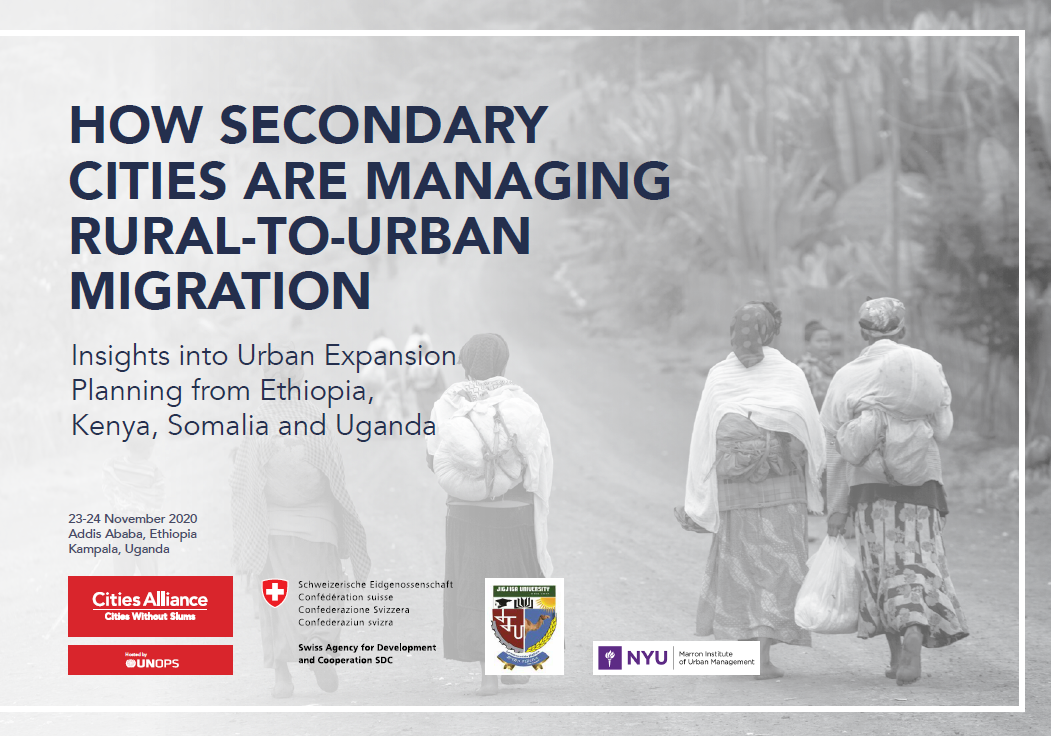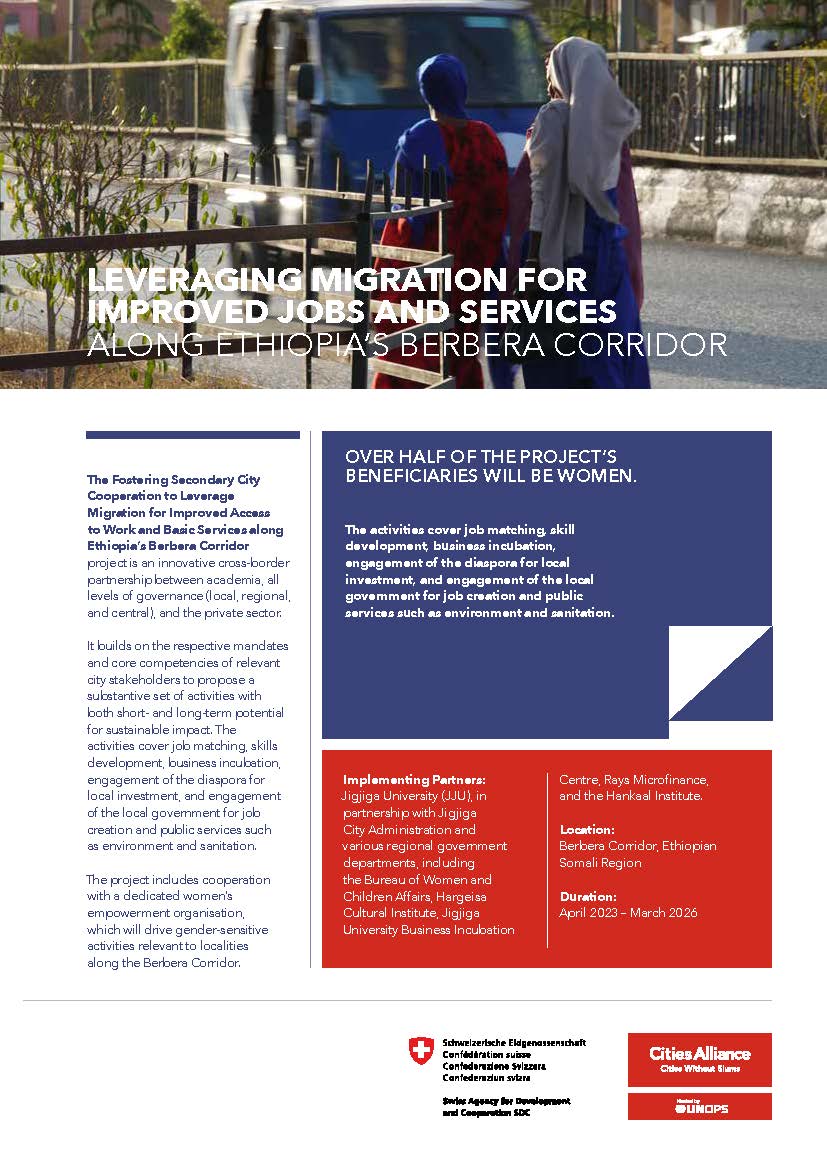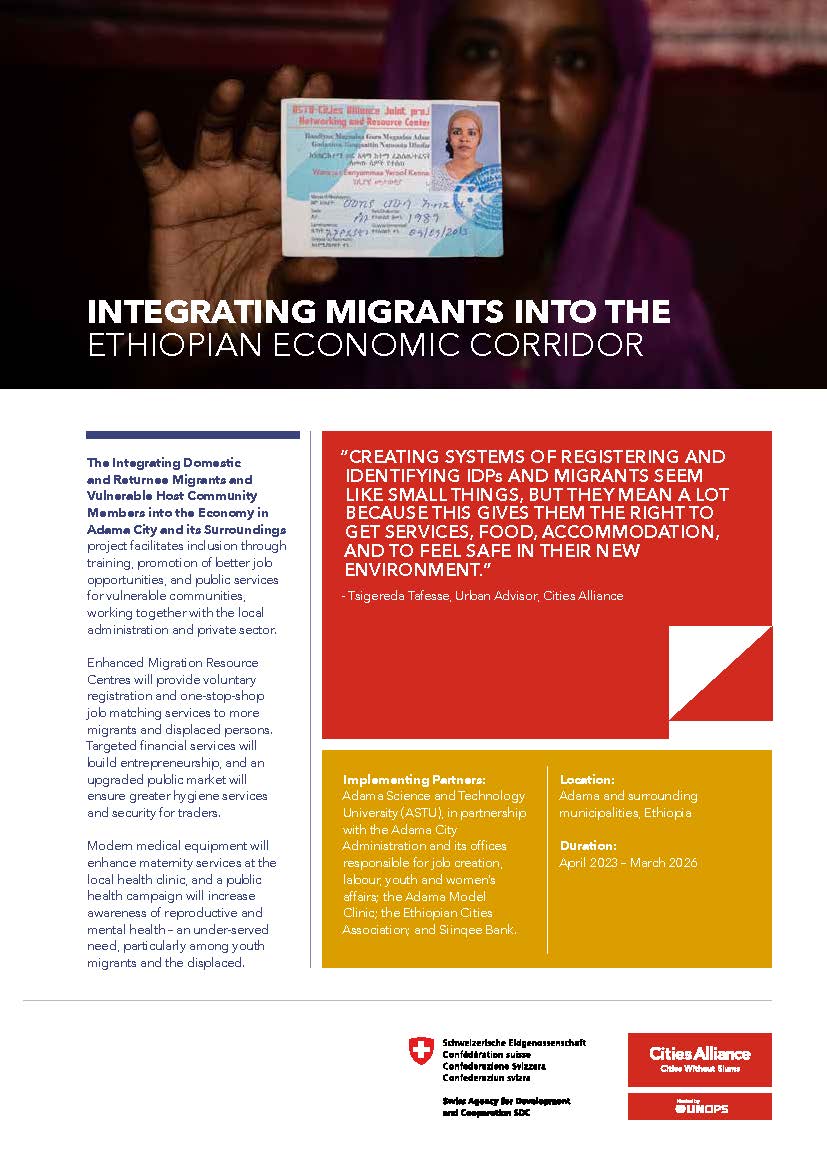- Who We Are
- How We Work
- Regional / Country Initiatives
- Legacy
- Core Themes
- Working Groups
- Portfolio & Results
- Newsroom
- Resources
How Secondary Cities Are Managing Rural-to-Urban Migration

This report provides insights into how secondary cities in the Horn of Africa are using urban expansion planning to approach challenges related to rural-urban migration. It is based on a regional dialogue organized by the Cities Alliance Cities and Migration Programme in partnership with New York University (NYU) Marron Institute and Jigjiga University from 23-24 November 2020 in Addis Ababa, Ethiopia and Kampala, Uganda.

Rural-to-urban migration is one of the major dynamics secondary cities across the developing world have to manage. It is not the only reason cities are growing fast; natural growth and expanding jurisdictions are also factors. Migration is, however, a primary cause for the growth of secondary cities, especially in Ethiopia and Uganda.
With the support and partnership of the Swiss Agency for Development and Cooperation (SDC), the Cities Alliance Global Programme for Cities and Migration has identified a promising approach to support cities in low-income countries to better manage rural-urban migration: urban expansion planning, which is a simple, cost-effective way for cities to proactively plan for their urban expansion.
Through the approach, cities prepare a grid of arterial roads in the urban periphery before it is developed. The key to the approach is to gauge the amount of land needed and secure the rights of ways before urban development happens. This approach is much cheaper than retrofitting roads and services onto land that has already been developed.
From 23-24 November, Cities Alliance, SDC, the NYU Marron Institute, and Jigjiga University organized a regional dialogue on rural-to-urban migration and urban expansion planning to share experiences in the Horn of Africa and explore how to replicate the approach.
The dialogue was an opportunity for cities and ministries from Ethiopia, Kenya, Somalia, and Uganda to learn from each other and identify the way forward for designing solid urban expansion plans that respond to the realities of each city and build partnerships to facilitate implementation. It also included concrete options for financing – a key concern for the cities.


